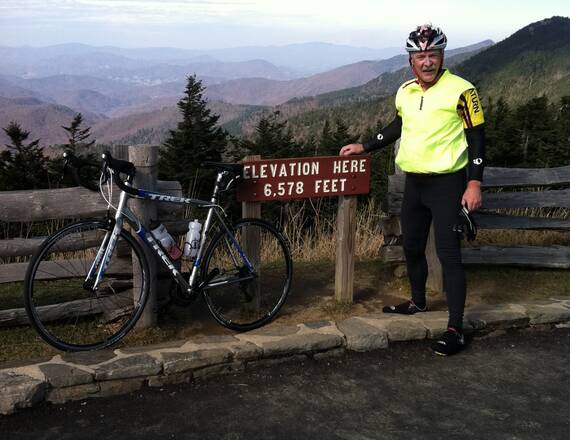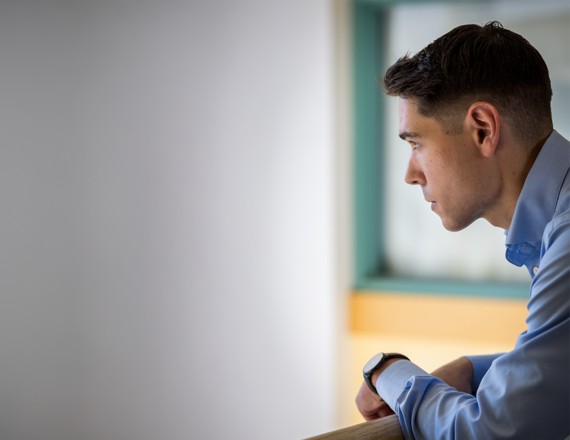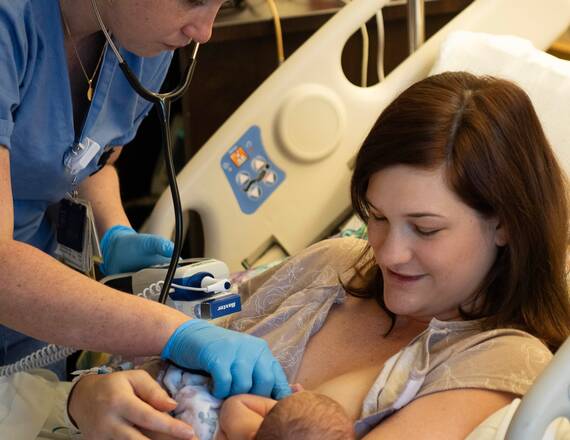A Pacemaker Fit for a Cyclist
Larry Morgan cycles thousands of miles each year. On his bicycle, he traverses tough terrain, covering many of his miles in the heart of New Hampshire’s White Mountains, his heart pumping hard to power him up steep hills.

Cardiac health is crucial for an avid cyclist like Morgan. But in 2018, he began to notice that he couldn’t keep up during group rides, and after consulting with his doctor, Morgan discovered that it was his heart that was struggling. During uphill climbs, when his heart normally would have been beating at 150 beats per minute or more, it was maxing out at 104. In the evening, his heart rate would go down as low as 34 beats per minute. “That’s only 34 away from zero,” the retired engineer says.
Five years later, Morgan is again cycling between 150 and 200 miles a week during the summer, climbing an average of 60 to 65 feet of elevation each mile, and his friends no longer have to wait for him at the top of hills. The credit, he says, goes to Kevin Kwaku, MD, PhD, director of clinical electrophysiology at Dartmouth Hitchcock Medical Center, who not only installed Morgan’s pacemaker, but, the cyclist says, listened to and accommodated his unusual requests to support riding.
“I wouldn’t be cycling without him,” Morgan says. “He did a remarkable job.”
For most patients with pacemakers, the devices are used to maintain healthy heart rates and allow them to lead normal lives. Some special pacemakers can even help treat heart failure. The device, which is implanted into a patient’s upper chest, sends electrical signals to the heart muscle to tell it when to beat. But for an avid cyclist like Morgan, the pacemaker needed to support much more rigorous activity, and attain and sustain much higher heart rates than the average pacemaker patient.
Kwaku, Morgan says, asked lots of questions about his lifestyle and selected a pacemaker device that would enable him to continue cycling—a choice that Morgan says “made a huge difference.” While most pacemakers increase the user’s heart rate in response to motion, the type Kwaku chose for Morgan can also increase his heart rate in response to increases in his breathing rate. For skilled cyclists, this is important because their upper body doesn’t move much, so the device wouldn’t know just from motion how much to accelerate Morgan’s heart rate in order to support the physical demands of his pumping legs.
But Kwaku’s support for Morgan’s cycling didn’t end with selecting the best device. During follow-up appointments after Kwaku implanted the pacemaker, the cyclist asked the doctor if he would make adjustments to it so his heart rate could get a little bit higher for challenging hills. Kwaku took his request seriously, looked into it, and then proceeded with a plan that supported both Morgan’s health and his request.
Kwaku was able to make programming tweaks noninvasively to adjust how the device would respond to particular physiological demands. Then Morgan would test out the changes by exercising between appointments, and that would inform how Kwaku made further adjustments to optimize the pacemaker’s performance for the demands of cycling.
“I’m not sure every cardiologist would’ve listened to a patient asking about changing the modification factor,” Morgan says.
Every year, Morgan writes Kwaku a note of gratitude, sharing with the doctor his cycling achievements for the year. In his fifth installment, sent to Kwaku in January, Morgan wrote that he has covered almost 20,000 miles on a bicycle since his pacemaker surgery.
“Knowing and seeing that our care results in improved lives of our patients is the principal reward of a career in medicine,” Kwaku says. “Whenever a recipient of that care goes out of their way to express their appreciation and gratitude, it serves to renew that sense of purpose, remind us that we are, truly, making a difference.”
In 2023, Morgan rode 3,780 miles with 230,900 feet of elevation gain. In his latest letter, he told Kwaku, “You probably added years to my life, but you certainly added life to my years.”


